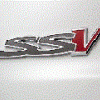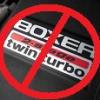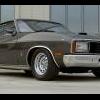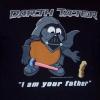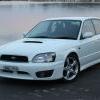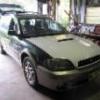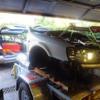I've been doing some research on GTB's and have come across a heap of great info.
Thought you guys might want to have a read or add to a sticky? So I put the below together.
Legacy EJ20 Changes

dunno how to attached as .xls
Engine Codes:


What the BBOD Actualy does:

Guides:
AFM Mesh Removal - http://homepages.ihu...cgrant/mesh.htm
AFM Bellmouth mod - http://homepages.ihu...rant/airbox.htm
Prova ECU Review(15% power gain) - http://homepages.ihu...grant/prova.htm
Whiteline rear swaybar review - http://homepages.ihu...cgrant/sway.htm
Cheap Boost Mod - http://homepages.ihu...grant/antiw.htm
Cold air Mod - http://homepages.ihu...ccgrant/cai.htm
DIY Waterspray Intercooler - http://homepages.ihu...nt/ic_water.htm
DIY Waterspray Controller - http://homepages.ihu...ic_water_II.htm
Another intake mod - http://homepages.ihu...ant/intake2.htm
CEL Codes:
Check Engine Light Codes (CEL)
To identify an existing fault, you will need to follow the following procedure. Please also note that the ECU light flashes to indicate the error code, the slow flashes which come first are the tens digits. The fast flashes that come second are the single digits. For example, an error code of 13 will be one slow flash and 3 quick flashes straight after the first flash, then their will be a short break and it will flash the sequence again.
Identify ECU Fault Code
With ignition OFF, locate black (note in very early Legacy’s this maybe white) ECU check connector below dashboard on left side of drivers foot well. It will be two small black connectors, one female and one male which will probably be alongside the ECU reset connectors which are green.
Turn the ignition ON and identify how many times the check engine light flashes (if any). This will be the error code stored in the ECU memory.
Locate the fault code in the chart below and this will identify the fault. If you feel the fault is incorrect, you can reset the ECU by using the procedure below.
Turn ignition OFF and unplug the connectors.
ECU Reset
With ignition OFF, locate the 2 black ECU check connectors and the 2 green ECU reset connectors below dashboard on left side of drivers foot well. There will be one female and one male of each color (Black & Green).
Connect the black connectors together, and connect the green connectors together.
Start the vehicle and drive until the check engine light starts flashing. ENSURE THE VEHICLE SPEED REMAINS ABOVE 11 Km/h.
If there is no fault, the check engine light should flash steadily. If there is a fault, the check engine light will flash the appropriate code which can be checked against the table below and the fault rectified ASAP.
Stop engine and turn ignition OFF.
Disconnect the two black and two green connectors.
CEL Error Codes
Code
Description
Fault
11
Crank angle sensor
Open or Short
12
Starter switch
Open or Short
13
Cam angle sensor
Open or Short
21
Water temperature sensor
Open or Short
22
Knock sensor
Open or Short
23
Air flow sensor
Open or Short
24
ISC valve
Open or Short
31
Throttle position sensor
Open or Short
32
O2 sensor
Open or Short
33
Speed sensor
Open or Short
38
AT torque down request
Open or Short
44
Supercharging oppression output
Open or Short
45
Atmospheric pressure sensor/
Absolute pressure change solenoid
Open or Short
61
Inhalation valve solenoid
Open or Short
62
Exhaust valve solenoid (vacuum)
Open or Short
63
Supercharging pressure relief valve solenoid
Open or Short
64
Secondary waste gate solenoid
Open or Short
65
Differential pressure sensor
Open or Short
66
Sequential turbo system
No rise in pressure or pressure excessive (Over boost)
67
Exhaust valve solenoid (positive pressure)
Open or Short
68
Exhaust valve duty solenoid
Open or Short
More Liberty Codes:
Use the following table to work out your car.
Car Type 1st Column 2nd Column 3rd Column 4th Column 5th Column 6th Column 7th Column
Legacy B C = 1st generation sedan
D = 2nd generation sedan
E = 3rd generation sedan
L = 4th generation sedan
F = 1st generation wagon
G = 2nd generation wagon
H = 3rd generation wagon
P = 4th generation wagon
5 = 2.0 4WD
Yearly Model Type Change
A, B, C, D, & etc 4 = 4 door (sedan)
5 = 5 doors (wagon)
NB:-
Some first generation legacy wagons may have the value 4.
Need to check this. Number range from 3 to 9
The higher the number the higher the grade of the car.
Relates to the model and car specification.
See table below D = 5MT center diff. DOHC turbo
P = 4AT DOHC turbo VTD
T = sport shift DOHC turbo
The grade or specification of the car taken from the seventh column of the Model Number.
1 = A = a starting point - no cars have this spec.
2 = B = Basic
3 = C = Casual
4 = E = Economy, extra, something else than basic
5 = G = Grandwagon, Good
6 = L = Luxury, Lancaster
7 = R = Racing
8 = S = Sport
9 = GT Super Touring and combining VTD
X = unknown = Used on SVX's??
Z = Not sure about this one. Any one seen a Z for the seventh column. Could be something do to with the first Legacy 2 liter engine.
Abbreviation's
GT = Grand Touring.
RS = Rally Sport, "K" of the RSK " turbo" = kompressor in German
B4 = BOXER and 4WD.
BD/BG LEGACY
93/10 96/05
RS BD5A48D - BD5A48P
GT BD5A49P
GT BG5A59D - BG5A59P
GT-V Limited BG5A59D - BG5A59P
GT B-spec BG5A59D - BG5A59P
GT B-spec Ⅱ BG5A59D - BG5A59P
GT E-spec BG5A59P
96/06 97/07
RS BD5B48D -BD5B48P
GT BD5B49P
GT BG5B59D -BG5B59P
GT-V Limited BG5B59D -BG5B59P
GT-B BG5B5CD -BG5B5CP
97/08 98/05
RS BD5C48D -BD5C48P
GT BD5C49P
GT BG5C59D -BG5C59P
GT-B BG5C59D -BG5C59P
GT-B LTD BG5C5ED -BG5C5EP





